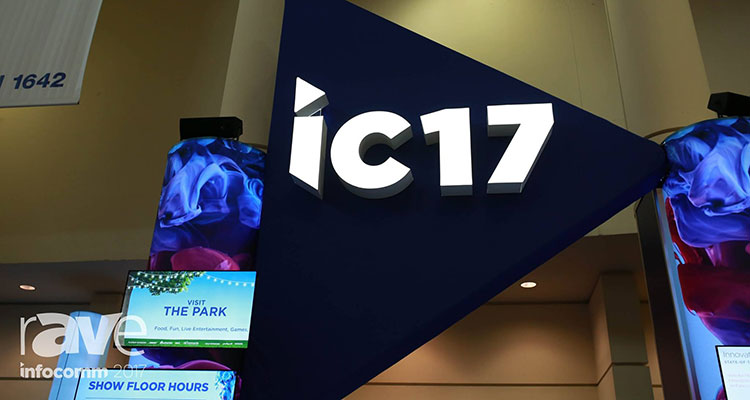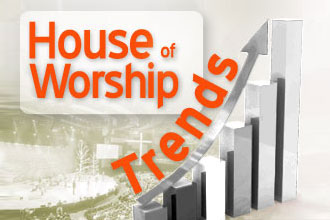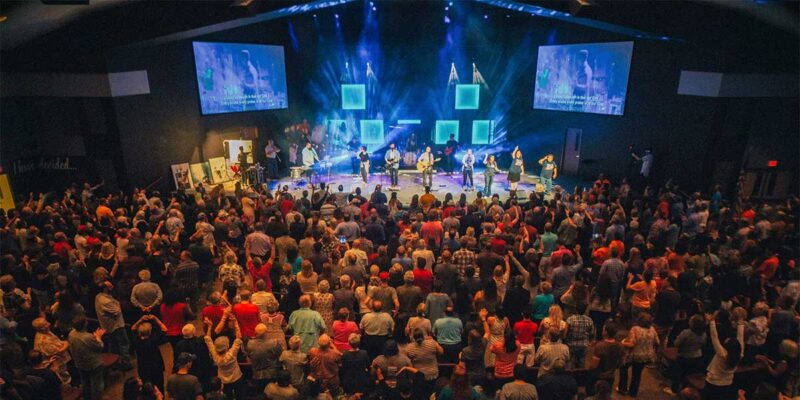The Overlooked Attendees of InfoComm – Church Tech Leaders
 In the sweltering humidity of Orlando in June, InfoComm hosts tens of thousands of attendees, each traversing the exhibit hall floor to find technological inspiration and an air-conditioned respite from the sticky Florida air. Among these roaming masses are the nondescript technical directors, front-of-house engineers, video production staff and volunteers sent by their church leaders to bring back ideas and products to meet their ever-changing needs. This underserved market segment desperately tries to look past the tech specs, the marketing spiel emblazoned upon booths and the regurgitated product pitches by the uniformly logo-clad armada of representatives confined to the carpeted slabs of territory marked by aisles. These sojourners from houses of worship are ever less inclined to purchase more of the same and instead seek out the differentiators and innovators offering new ways of approaching old and new problems.
In the sweltering humidity of Orlando in June, InfoComm hosts tens of thousands of attendees, each traversing the exhibit hall floor to find technological inspiration and an air-conditioned respite from the sticky Florida air. Among these roaming masses are the nondescript technical directors, front-of-house engineers, video production staff and volunteers sent by their church leaders to bring back ideas and products to meet their ever-changing needs. This underserved market segment desperately tries to look past the tech specs, the marketing spiel emblazoned upon booths and the regurgitated product pitches by the uniformly logo-clad armada of representatives confined to the carpeted slabs of territory marked by aisles. These sojourners from houses of worship are ever less inclined to purchase more of the same and instead seek out the differentiators and innovators offering new ways of approaching old and new problems.
 The tradeshow floor/expo hall is a mixed opportunity of vendors hawking marginally improved technology and the new innovations that build upon reliable infrastructure to offer limited risk with the upside of a better reward. Aisle after aisle looks similar enough so that the competition bears little differentiation, but an intensified focus on Nth-degree increases in faster processing or upgraded hardware. The point of diminishing returns is not lost on seasoned church techs, who have been jaded by over-promises in product reliability and underserved support options for what for all intents and purposes are mission-critical technology venues similar to network operation centers or data centers. Fortunately, InfoComm recognizes that the house of worship market has significant buying power and has at least added sessions geared for churches to their educational track. In fact, this year ICIA has partnered with Church Technical Leaders (CTL), a non-profit organization focused on educating church technicians and building a community for these professionals and volunteers to foster the sharing of experiences and insights. A total of eight church technology-oriented sessions offered by CTL are taught from their ranks of professionals at InfoComm 2017 out of the 220 sessions and events during the show.
The tradeshow floor/expo hall is a mixed opportunity of vendors hawking marginally improved technology and the new innovations that build upon reliable infrastructure to offer limited risk with the upside of a better reward. Aisle after aisle looks similar enough so that the competition bears little differentiation, but an intensified focus on Nth-degree increases in faster processing or upgraded hardware. The point of diminishing returns is not lost on seasoned church techs, who have been jaded by over-promises in product reliability and underserved support options for what for all intents and purposes are mission-critical technology venues similar to network operation centers or data centers. Fortunately, InfoComm recognizes that the house of worship market has significant buying power and has at least added sessions geared for churches to their educational track. In fact, this year ICIA has partnered with Church Technical Leaders (CTL), a non-profit organization focused on educating church technicians and building a community for these professionals and volunteers to foster the sharing of experiences and insights. A total of eight church technology-oriented sessions offered by CTL are taught from their ranks of professionals at InfoComm 2017 out of the 220 sessions and events during the show.
Veteran trade show attendees plan out their days’ walking to spotlight key vendors and technologies they want to see first, carefully mapping out their path to avoid the redundancy of re-walking miles of aisles. In the process, these wizened attendees walk past hundreds of vendors that may have a technology solution that would fit their venues, only to miss out on helping a church tech leader self-identify with a product offering because no visual reference alerted the potential buyers of vertical market applications. In a sea of me-too products and marketing verbiage, the would-be buyers pass by untold opportunities simply out of ignorance that certain vendors have technologies that would serve the house of worship market.
The educational focus in classrooms is well and good (and taught by the esteemed professionals of CTL), but the swing-and-miss for the exhibitors and tech pilgrims alike is the notable inclusion of general vertical market segments (education, government, corporate) and marked omission of the house of worship market segment.
What’s still needed at tradeshows like InfoComm is a focus on selling to and working with vertical market segments for the Audio/Video/Lighting (AVL) systems integrators and contractors, something that would benefit from the experienced leaders from Church Technical Leaders. The average booth attendee wears no distinguishing identification to help booth staff distinguish the potential buyer, and the name badges are prone to be flipped backward anyway, so perhaps this is an area where attendees can choose to have a uniquely colored ribbon added to their lanyard to identify the kind of organization they represent? InfoComm, and trade shows like it, would do well to help make the visual connection between the specialty of the potential buyer and the expertise of their market segment align with key staff in the vendor booth. As it is, the booths are largely oriented towards a general audience that makes it harder to discern the value of the technology on display out of the context of venue requirements in each of the vertical markets. Booth square footage is ludicrously expensive temporary real estate, yet there needs to be a way to identify the applications and problem-solving aspects of the promoted technology for the intended audience segments.
Bravo to InfoComm to opening up a partnership with CTL, as they’ve done previously with other partners in the house of worship market, but the eight out of 220 sessions and events is a far too limited an offering for most churches to send their tech teams across the country. AES, NAB, LDI and other trade shows that have a strong presence of church buyers need to drastically increase the focus on this market segment. As I’ve written about previously, the money is there. See ($580M in One Year — Multi-site Churches; Align to Church Growth Trends; Church Attendance Surging, Pushing HOW Market Growth; Trends and Data Point to Church Market Opportunities) for examples of how this 300,000+ church market (in North America alone) is still underserved.
Do you notice church tech leaders at trade shows? How can trade shows like Infocomm improve in attracting and serving the church market buyer? Share your opinions and experiences in the comments below.





